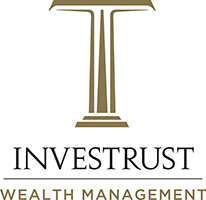The New York Stock Exchange Group averaged more than 5.7 million trades per day in 2017, with an average of almost 1.5 billion shares changing hands.1 Many of these trades are more complex than most investors need to consider, but it may be helpful to understand some basic terms and types of trades.
Bid and ask — The bid price is the maximum a buyer is willing to pay for a security. The ask price is the minimum a seller is willing to accept. The difference between them, called the spread, may be as low as a penny for the stock of a large well-known company, but wider for a smaller, more obscure company.
Market order — An order to buy or sell a security immediately at the best available price (though there is no price guarantee). A market order generally will execute at or near the current bid price for a sell order, or the ask price for a buy order. However, the last-traded price, typically the price you see listed on an exchange, is not necessarily the price at which a market order will be executed.
The following order types do not guarantee that the trade will be executed. They typically allow the investor to set a time limit that may range from a day to a year.
Limit order — An order to buy or sell a security at a specific price or better. For example, if an investor wants to purchase shares of XYZ stock for no more than $10 per share, the investor could submit a buy limit order for $10 and the order will execute only if the price of XYZ stock is $10 or lower. If the investor wants to sell at a price of at least $20 per share, a sell limit order for $20 would execute only at a price of $20 or higher.
Stop order (or stop-loss order) — An order to buy or sell a security once the price reaches a specified level, known as the stop price. Investors generally use a sell stop order to limit a loss or protect a profit on a stock they own.
For example, if you own shares of XYZ security that are currently trading at $50 per share, and are concerned about holding the shares in a declining market, you could set a stop-loss order at $48 per share. If the share price declines to $48, your shares would sell at the next market price, which would typically be a little below $48 if the market decline is gradual. However, if trading is interrupted or there are large changes overnight, you could end up selling at a lower price than anticipated.
Stop-limit order — An order to buy or sell a security once the price reaches the stop price, as long as the trading price is at a specified limit price or better. This helps protect against the possibility of a stop order triggering a trade at an unwanted price. To use the example above, you could set a stop price for XYZ shares at $48 per share and a limit at $47 a share. The order would execute when the share price falls to $48 but only as long as it remains above $47.
All investments are subject to market fluctuation, risk, and loss of principal. When sold, investments may be worth more or less than their original cost.
